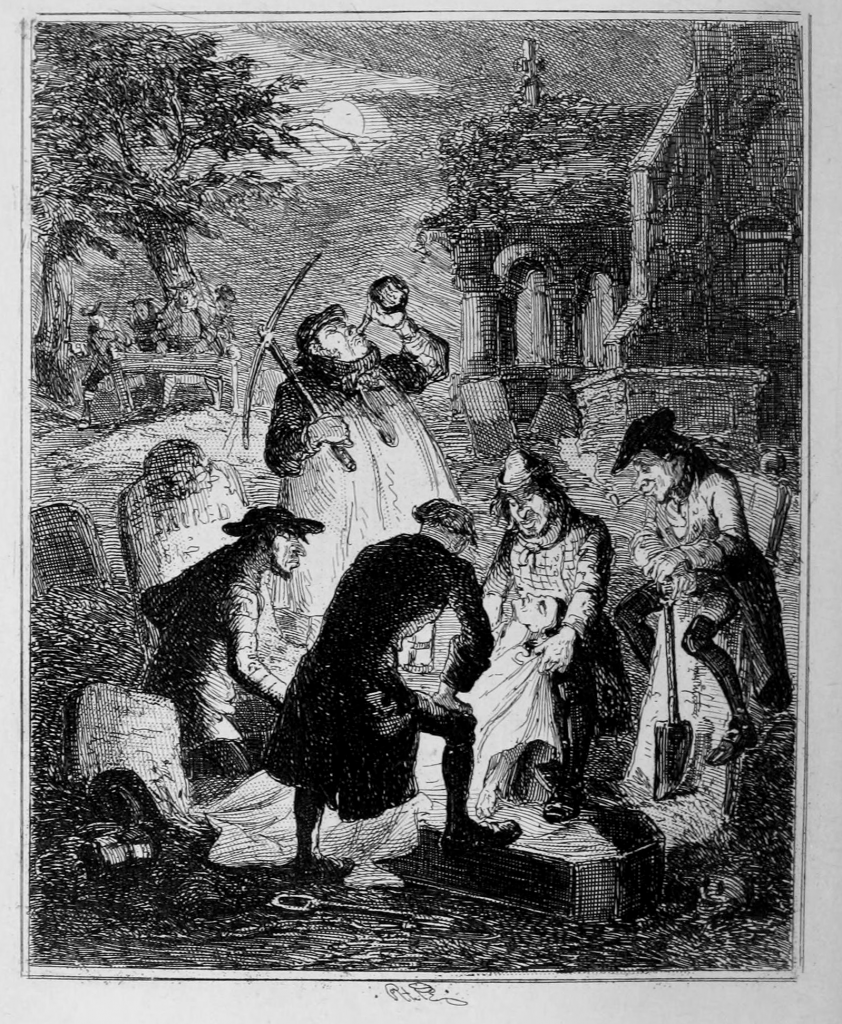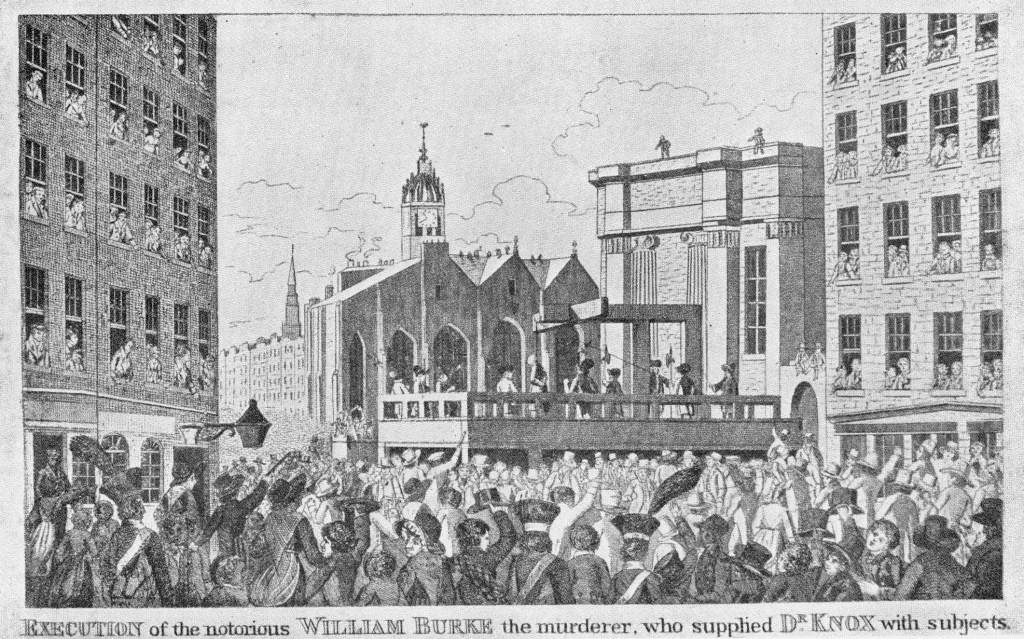While October may signify the start of Spooky Season for many, here at Ripley’s we’d venture to say, it’s always spooky season. We’re pouring one out for a truly spooky time in history where hour of death meets happy hour, and people quite literally reached the bottom of the barrel.
Ah, 1828 the year of the railroad. The very first common carrier, the Baltimore and Ohio Railroad, was born, and from then on, the world of transportation, timing, and crime would never be the same. Today, we view trains as a means to get people and other goods from point A to point B. And, nearly 200 years ago, they had a very similar viewpoint, aside from the fact that people and goods essentially fell into the same category.
Though there were many benefits to this new mode of transportation, it also came with some pretty severe consequences. During this time, Baltimore was a true hotspot for those in the grave snatching business. The city was filled with prestigious medical schools which meant that in order to conduct research or further investigate human anatomy, they needed bodies—and lots of them. The demand for products was high, and the climate was basically ideal for diggers. The grounds were located in a temperate zone with little to no frozen soil, regardless of the season.
Why, might you ask, would people willingly dig up freshly deceased bodies? We don’t have to be the one to tell you, it was all about the money. At this time, in the United States, there was no standard procedure for receiving these medical subjects. Schools needed dissection material and were willing to pay to get it. They sent every staff member from students to the cleaning crew to the doctors themselves to take on this grim way to make some green.

As one can imagine, plundering the ground to retrieve a freshly buried corpse, was no easy task. The diggers began by shoveling at the head of the coffin. They broke the lid with their shovels and secured a large hook around the victim’s neck or armpit. Like clockwork, they tugged on this makeshift rope pulley system to hoist the body from its peaceful resting place.
But, their greedy ways don’t stop at the grave! Like any good delivery, shipping was included in this gruesome act. To send the body elsewhere, the snatchers weren’t able to just waltz down the street, making the freshly invented railroad system their new best friend.
We know what you’re thinking—the stench on these trains must have been totally rancid. When you’re in the business as often as these snatchers were, you come to learn a thing or two about discretely transporting bodies. The corpses were folded up into barrels and filled to the top with whiskey to mask the outrageous odor. At the final destination, the medical professionals removed the remains from their alcoholic state and began procedures.
Unfortunately, the thirst for a little extra cash didn’t end there. The leftover “rotgut” whiskey from inside these transportation barrels was actually sold to the public as “stiff drinks.”
While other areas, like Central Europe, had far more ethical ways of retrieving dead subjects for their schools, no such process existed in the U.S. In fact, while technically one could be charged with a misdemeanor for the act of grave digging, people were seldom prosecuted for doing so.
Politicians protected the act. Lawyers knew the way to argue it. Policemen looked the other way. And the cemeteries themselves were often in on the action. However, some body snatchers weren’t so lucky to be simply let off the hook.
William Burke and William Hare were two gentlemen who were a bit too impatient to be grave diggers. Rather than wait around for people to die naturally, they resorted to the quicker option: murder. Over the course of a year, the two murdered 16 people to sell their bodies to Dr. Robert Knox, an independent lecturer of anatomy in Edinburgh’s Surgeon’s Square. They lured their victims into the bar, got them excessively drunk, and suffocated them in the height of their intoxicated stupor. This practice of killing and selling bodies became aptly known as “Burking.” After finally being prosecuted for the act, Burke was sentenced to be hanged in January of 1829.

However, this was not the end of grave diggers or their morbid career paths. It wasn’t until 1900, many years after the state Anatomy Board was created to allocate unclaimed corpses, that the trafficking finally ended.
And speaking of medical corpses, it just so happens we have a piece from this historical time in our own Ripley’s collection. Though it certainly took more than half a head to figure out brain surgeries and cranial operations, we have these involuntary corpses to thank for many medicinal successes. Be sure to check out more rarities like this one inside the pages of our 17th annual, Mind Blown!









Comment Your Reaction